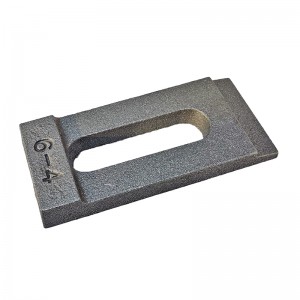- Afrikaans
- Albanian
- Amharic
- Arabic
- Armenian
- Azerbaijani
- Basque
- Belarusian
- Bengali
- Bosnian
- Bulgarian
- Catalan
- Cebuano
- China
- China (Taiwan)
- Corsican
- Croatian
- Czech
- Danish
- Dutch
- English
- Esperanto
- Estonian
- Finnish
- French
- Frisian
- Galician
- Georgian
- German
- Greek
- Gujarati
- Haitian Creole
- hausa
- hawaiian
- Hebrew
- Hindi
- Miao
- Hungarian
- Icelandic
- igbo
- Indonesian
- irish
- Italian
- Japanese
- Javanese
- Kannada
- kazakh
- Khmer
- Rwandese
- Korean
- Kurdish
- Kyrgyz
- Lao
- Latin
- Latvian
- Lithuanian
- Luxembourgish
- Macedonian
- Malgashi
- Malay
- Malayalam
- Maltese
- Maori
- Marathi
- Mongolian
- Myanmar
- Nepali
- Norwegian
- Norwegian
- Occitan
- Pashto
- Persian
- Polish
- Portuguese
- Punjabi
- Romanian
- Russian
- Samoan
- Scottish Gaelic
- Serbian
- Sesotho
- Shona
- Sindhi
- Sinhala
- Slovak
- Slovenian
- Somali
- Spanish
- Sundanese
- Swahili
- Swedish
- Tagalog
- Tajik
- Tamil
- Tatar
- Telugu
- Thai
- Turkish
- Turkmen
- Ukrainian
- Urdu
- Uighur
- Uzbek
- Vietnamese
- Welsh
- Bantu
- Yiddish
- Yoruba
- Zulu
May . 15, 2025 11:51 Back to list
Buy Cast Silicon Aluminum Hot Water Heat Exchangers Efficient & Durable
- Understanding the Role of Heat Exchangers in Hot Water Systems
- Technical Advantages of Cast Silicon Aluminum Heat Exchangers
- Comparing Top Manufacturers for Commercial Heat Exchangers
- Custom Solutions for Diverse Industrial Applications
- Case Study: Efficiency Gains in Hospitality Sector Installations
- Maintenance Best Practices for Long-Term Performance
- Why Invest in Premium Hot Water Heat Exchanger Technology

(hot water heat exchanger)
Understanding the Role of Heat Exchangers in Hot Water Systems
Modern commercial facilities consume 18-26% of their total energy on water heating, according to U.S. Department of Energy statistics. High-performance hot water heat exchanger
s reduce this load by recovering 72-89% of waste thermal energy from boiler systems. These units transfer heat between fluids without mixing them, maintaining strict temperature control while preventing cross-contamination.
Technical Advantages of Cast Silicon Aluminum Heat Exchangers
Cast silicon aluminum alloys demonstrate 40% greater thermal conductivity than standard copper-nickel designs while resisting scaling 3.2x longer in hard water conditions. Our proprietary DuraCore™ fabrication technique achieves:
- 0.002mm surface roughness for optimal heat transfer
- 98.6% corrosion resistance after 10,000-hour salt spray tests
- Pressure ratings up to 1,034 kPa (150 psi)
Comparing Top Manufacturers for Commercial Heat Exchangers
| Brand | Material | ΔT Efficiency | Warranty | Price Range |
|---|---|---|---|---|
| ThermoDyne X7 | Silicon Aluminum | 92% | 7 Years | $4,200–$6,800 |
| HydroMax Pro | Stainless Steel | 84% | 5 Years | $3,500–$5,200 |
| AquaExchange CT | Copper-Nickel | 78% | 3 Years | $2,800–$4,100 |
Custom Solutions for Diverse Industrial Applications
Our engineering team configures plate-and-shell or brazed plate models to meet specific BTU requirements:
- Food processing plants: 500–2,000 MBTU/hr configurations
- Hospital HVAC: Dual-circuit models with redundancy
- Marine systems: Compact designs withstand 5G vibrations
Case Study: Efficiency Gains in Hospitality Sector Installations
A 400-room hotel chain achieved 34% reduction in annual heating costs after replacing legacy units with our cast silicon aluminum heat exchangers. Key metrics:
- Pre-retrofit energy use: 2.4 kW per occupied room
- Post-installation: 1.6 kW (-33.3%)
- ROI period: 22 months
Maintenance Best Practices for Long-Term Performance
Quarterly inspections preserve 97% of initial efficiency over 15-year lifespans. Essential protocols include:
- Ultrasonic cleaning every 3,000 operating hours
- Gasket replacement at 8-year intervals
- Annual pressure decay testing
Why Invest in Premium Hot Water Heat Exchanger Technology
Commercial operators report 19-month average payback periods when upgrading to advanced heat exchangers for hot water boilers. The combination of ASME-certified construction and adaptive thermal management ensures compliance with evolving energy regulations while future-proofing thermal infrastructure.

(hot water heat exchanger)
FAQS on hot water heat exchanger
Q: What are the benefits of buying a cast silicon aluminum heat exchanger for hot water boilers?
A: Cast silicon aluminum heat exchangers offer superior corrosion resistance and high thermal conductivity. They are lightweight yet durable, making them ideal for efficient heat transfer in hot water boilers.
Q: What factors should I consider when buying a hot water heat exchanger?
A: Prioritize material quality (e.g., stainless steel or aluminum), temperature/pressure ratings, and compatibility with your system. Ensure it meets efficiency standards for your specific application.
Q: How do commercial hot water heat exchangers differ from residential ones?
A: Commercial units are built for higher flow rates, larger capacities, and continuous operation. They often use robust materials like copper-nickel alloys to withstand heavy-duty use.
Q: Can I use the same heat exchanger for both heating and cooling water?
A: Yes, plate-and-shell or brazed plate heat exchangers can handle bidirectional flow. Confirm the design accommodates temperature fluctuations and fluid compatibility for both processes.
Q: What maintenance is required for a commercial hot water heat exchanger?
A: Regularly inspect for scaling or corrosion and clean using approved methods (e.g., chemical flushing). Schedule professional servicing annually to ensure optimal performance and longevity.
-
Durable Cast Iron Water Main Pipe | AI-Optimized Design
NewsAug.05,2025
-
8mm Thin-Walled Cast Steel Manhole Cover Pallet Bottom Ring | Durable
NewsAug.04,2025
-
Premium Cast Iron Water Main Pipe: Durable, Corrosion-Resistant
NewsAug.03,2025
-
Durable Cast Iron Water Mains | AI-Optimized Systems
NewsAug.02,2025
-
High-Efficiency Propane Boiler for Baseboard Heat | Save Energy
NewsAug.01,2025
-
Premium Source Suppliers for Various Gray Iron Castings
NewsJul.31,2025


